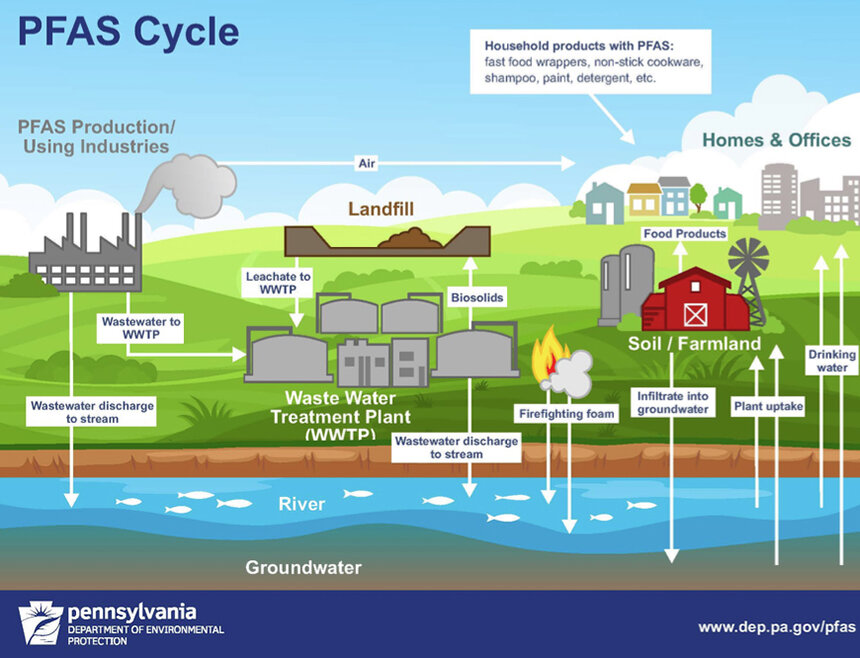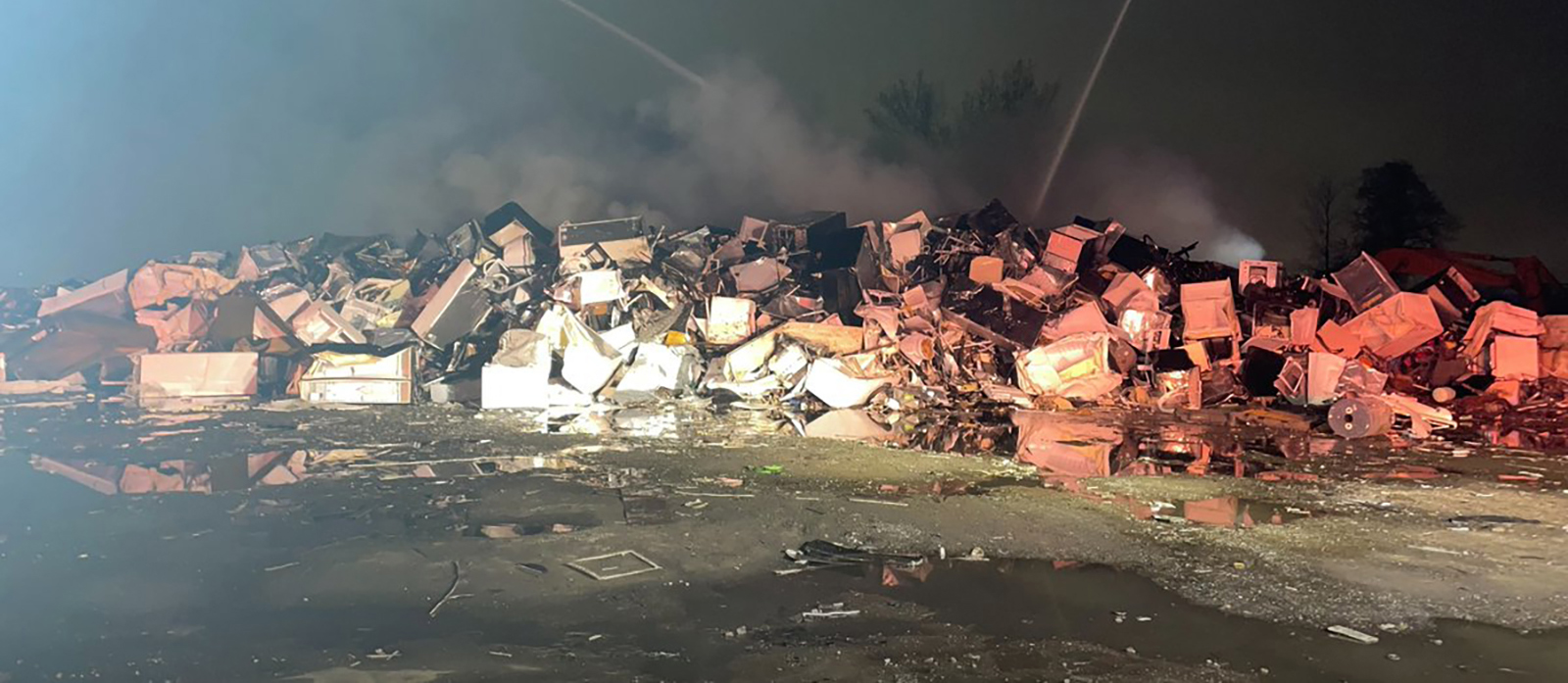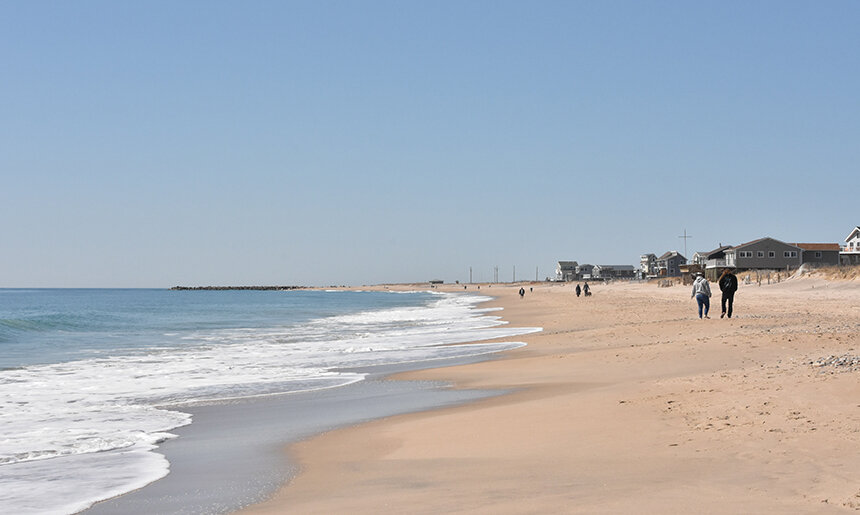How to Close Dump Has Dartmouth, DEP at Odds
Residents object to capping the highly contaminated Cecil Smith landfill with 1 million cubic yards of slightly contaminated material, and the town doesn't want the site capped before a comprehensive evaluation of the landfill is conducted
November 27, 2013
DARTMOUTH, Mass. — The unlined and now-closed Cecil Smith landfill contains some pretty nasty stuff. A former owner is alleged to have accepted contaminated dredging waste, including barrels filled with mystery substances. Tests have revealed the presence of PCBs, arsenic, cyanide, lead and mercury.
The nearly 100-acre site — the landfill portion of which is about 25 acres — is in the upper reaches of the Westport River watershed and has a history of Environmental Protection Agency (EPA) violations. Plans to clean up the site are well into their second decade. No environmental monitoring program is currently in place.
There now is a plan before the Massachusetts Department of Environmental Protection (DEP) to cap the former landfill with nearly 2 million tons of “low-level contaminated” soil. This proposed project would take about three years to complete and would involve trucks rumbling through neighborhoods six days a week.
SouthCoast Alliance for a Cleaner Tomorrow (ScACT), a neighborhood group that was formed in May to make sure the landfill is properly closed, would like to see this current clean-up plan scrapped. The group, along with town leaders, have asked DEP to perform a comprehensive site evaluation to determine what is actually buried in the landfill before another clean-up project is proposed.
“There needs to be more testing done,” said Gloria Bancroft, a longtime local resident and a founding member of ScACT. “The 13 to 14 wells that were tested were just a small sampling. I know they didn’t select some sites that the Board of Health would have liked.”
Town officials recently met with the DEP to discuss the idea of a comprehensive site evaluation possibly being conducted. DEP officials wouldn’t comment on the specifics of that meeting.
“MassDEP believes that last week’s meeting on the Cecil Smith landfill issue was very productive,” Edmund Coletta, director of DEP’s Public Affairs Office, wrote in a Nov. 20 e-mail. “We continue to work with all parties involved and believe that it would be inappropriate to offer any further comment at this time.”
Water, water everywhere
The site — also known as the Old Fall River Road landfill and Cold Brook Pines landfill — is surrounded on three sides by wetlands, which are the headwaters for the Westport River. The former landfill also in an aquifer and wellhead protection area, which serves thousands of residential and municipal wells, according to the Westport River Watershed Alliance.
During the late 1960s and early ‘70s, the owner, the late Cecil Smith, used the site for a variety of non-permitted solid-waste activities.
Contaminated water leaching out of the long-closed landfill is a threat to a number of wells in both Dartmouth and Westport, according to Betsy White, advocacy director for the Westport River Watershed Alliance. Among the wells within a 4-mile radius of the site are the Westport Country Day School, St. George School, Macomber School and Westport Plaza, she said.
The Brockton-based Boston Environmental Co. (BEC) has a proposal on the table to use 66,000 truckloads of soil caked with low-level contaminants to cap the site. The proposal calls for a 65-foot-high cap over 23 acres, according to the Boston Environmental plan. It is this closure plan town officials and neighbors are fighting.
An October letter sent to the DEP by the town’s Select Board outlined Dartmouth’s concern about the old dump and how it will be closed. “There should be no approval, capping, or closure in any form, until a Comprehensive Site Assessment (CSA) is completed,” the letter read.
The assessment should be funded through fines or by the applicant and current owner, Mary Robinson, according to the town’s letter. If the assessment doesn’t find serious environmental risks, the letter read, then an alternative capping system should be examined. Any design for capping or closure should be based on the findings of the assessment, according to the Select Board.
The total landfill closure operations, maintenance, monitoring and material placement costs have been estimated at $19,757,600, according to an October 2013 report by Parsons Environmental & Infrastructure Group Inc.
The Select Board’s letter also asks the owner to transfer the land to the town in a 30-year $1 lease, demands a mitigation plan and a post-closure fund for future monitoring of the site. A petitioned signed by 318 residents and submitted to the DEP requests the testing of the Shingle Island River and Colebrook Swamp, and soil, groundwater and wells within 0.6 miles of the site for contaminant concentrations, and asks for a detailed comparison to other alternative closure options that explains why the BEC proposal best protects the community.
Degradation documented
The landfill took demolition material for some 20 years.Sampling data associated with this landfill documents that there has been some degradation of groundwater, sediments and wetlands in the immediate area of the landfill, according to DEP.
However, DEP believes that contamination from the landfill is localized in the immediate vicinity of the site’s primary waste disposal area; the type and concentrations of groundwater contaminants don’t present an immediate public health or ecologic risk; the surrounding wetlands provide a natural mechanism that prevents the further migration of contaminants; and allowing the landfill to remain uncapped will allow the continued unrestricted percolation of stormwater into the landfill resulting in the release of millions of gallons a year of stormwater and leachate into nearby waters.
In June 2013, Haley & Aldrich Inc. released a report dealing with groundwater assessment findings to the DEP. The report found that recent groundwater sampling data is “consistent with the localized impacts one would reasonably expect and is commonly associated with construction and demolition debris landfills.”
Several public meetings have been held with state officials, including a three-hour session, to address concerns, but many local officials and residents aren’t happy with what has been said, especially the DEP’s unwillingness to have the site’s contaminated soil removed.
Opponents of the plan also are concerned about the idea of having some 1 million cubic yards of slightly contaminated material trucked in from Greater Boston. This material would likely include construction and demolition debris, coal ash and road sweepings. The material could contain up to 10 percent of various low-grade contaminants such as heavy metals and/or asbestos that make it unsuitable for residential or agricultural use.
The three-year project would require about 60 trucks daily to travel from Route 140, past the airport and down Old Fall River Road, according to the proposed plan. The proposed work schedule is 7 a.m.-5 p.m. Monday through Saturday.
Final construction closure work on the landfill, according to DEP, should include the installation of temporary and long‐term erosion controls; replication of disturbed wetlands; phased construction of final cover system with initial focus on northerly slopes; and construction of final stormwater management system controls on and adjacent to the property.
Up until the early 1980s, the Cecil Smith landfill served as a dump for demolition and construction debris from urban renewal projects. The private landfill has been closed for about 30 years.
The site abuts Cole Brook and the Shingle Island River, which goes to Lake Noquochoke, which feeds into the Westport River. It also abuts an aquifer and a wellhead protection area, which are important resources for drinking water in Westport, according to the Westport River Watershed Alliance.
This area of the watershed can’t be at risk of being contaminated, White said. It’s an environmentally sensitive area, containing designated habitats of rare wildlife, rare species and certified vernal pools.
In fact, there are three water bodies in that part of the watershed that are already on the EPA list of impaired waters — Cornell Pond, Copicut Reservoir and Lake Noquochoke, which are all contaminated with PCBs and/or mercury.
“We would like to see a comprehensive site assessment be completed by an objective contractor in order to determine, as much as possible, what the landfill contains in regards to toxic chemicals,” White wrote in an e-mail to ecoRI News. “We believe that only then can a capping project be designed to mitigate this landfill site, specific to what it contains. The capping should be kept as minimal as possible, and clean fill should be used, rather than low-level contaminated soils.
“The potential for the BEC-proposed project to harm the residents and the environment in a number of towns is extremely high, and there are a number of questions regarding safety and longevity of the cap that have yet to be answered.”
Unresolved mess
Abandoned cars dot the property.Many inactive and unlined landfills and dumps that ceased operations prior to 1990 were never properly closed and capped. These sites have the potential to cause adverse impacts to public health and the environment by generating leachate and landfill gas, according to the DEP.
“There’s a stew of contaminants at the site,” said Bancroft, who lives two streets away from the landfill. “It’s in a country setting with many homes and there is great concern about the health of private wells in the area.”
In 1954, a sand-and-gravel excavation operation began on the site, and until the mid-1970s, construction and demolition debris, such as roofing, bricks, wood, granite, plastics and lead-based paint, was dumped there. In the 1960s, the site began storing salvageable materials, most notably scrap metal and automobile waste. But the actual volume of material dumped at the site is unknown.
In 1974, the state Department of Health found oils and dredging material disposed of on the property.
Court orders were filed against property in 1973, 1975, 1981 and 1983. In 2009, DEP discovered scrap metal mining and evidence of burning and ordered those operations to cease. Two years later, DEP issued the owner an “Administrative Consent Order with Penalty,” whereby all buried solid waste was to be excavated and transported off site, restoring area to natural conditions. This consent order wasn’t agreed to by the landowner and never enforced — a $12,650 fine remains uncollected.
Categories
Join the Discussion
View CommentsRelated Stories
Your support keeps our reporters on the environmental beat.
Reader support is at the core of our nonprofit news model. Together, we can keep the environment in the headlines.
We use cookies to improve your experience and deliver personalized content. View Cookie Settings



